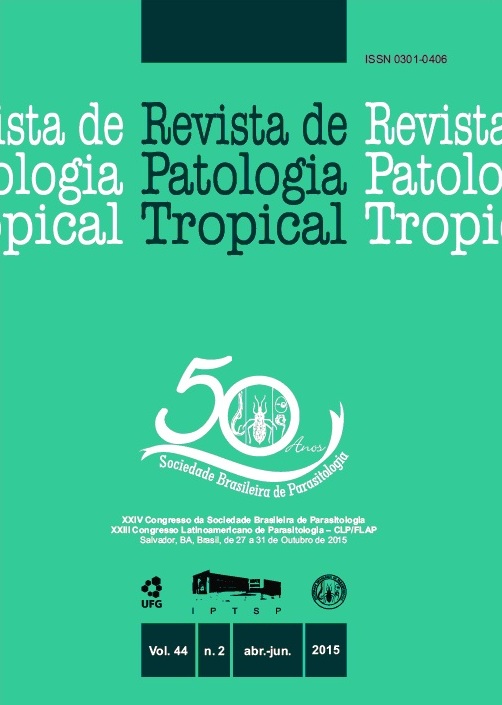IMPORTÂNCIA DA DISTRIBUIÇÃO GEOGRÁFICA DOS VETORES DA DOENÇA DE CHAGAS EM PERNAMBUCO, BRASIL, EM 2012
DOI:
https://doi.org/10.5216/rpt.v44i2.36650Palavras-chave:
Triatomíneos, doença de Chagas, controle de qualidade, Pernambuco.Resumo
Objetivos: Ressaltar a importância da distribuição geográfica e do comportamento dos vetores dadoença de Chagas no estado de Pernambuco. Métodos: O material analisado incluiu 100% dosinsetos infectados por Trypanosoma sp. e 40% dos insetos negativos, examinados no Laboratório deEndemias para confirmação taxonômica, pesquisa do parasito nas fezes dos triatomíneos e Controleda Qualidade na confirmação do diagnóstico. Resultados: Foram examinados 3.323 triatomíneos.A infecção natural por tripanossomatídeos foi detectada em 21,3% dos exemplares. Triatomabrasiliensis foi a espécie mais frequente no intradomicílio (24,3%), Triatoma pseudomaculata(14,9%) e Panstrongylus megistus apresentaram proporcionalmente taxa de infecção naturalsuperior às demais (40,8%) no peridomicílio. Conclusão: O conhecimento atualizado da distribuiçãogeográfica dos vetores da doença de Chagas é importante para fundamentar ações integradas entreos serviços de saúde, o que contribui para a vigilância entomológica no controle dos triatomíneos.Downloads
Downloads
Publicado
Como Citar
Edição
Seção
Licença
The manuscript submission must be accompanied by a letter signed by all authors stating their full name and email address, confirming that the manuscript or part of it has not been published or is under consideration for publication elsewhere, and agreeing to transfer copyright in all media and formats for Journal of Tropical Pathology.

